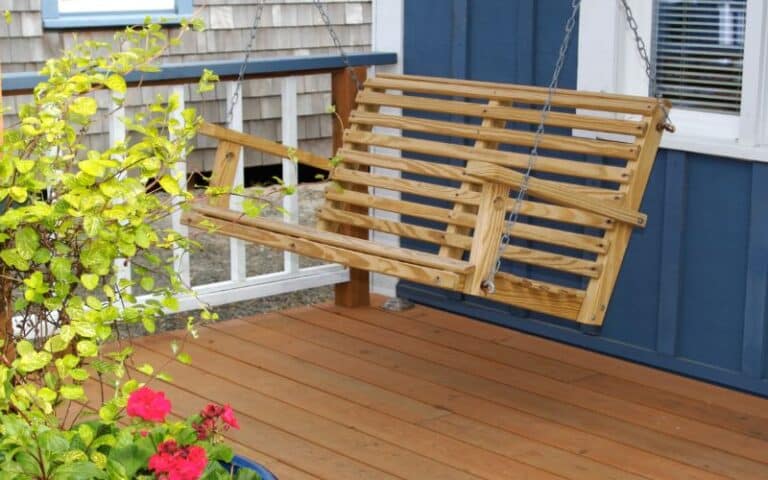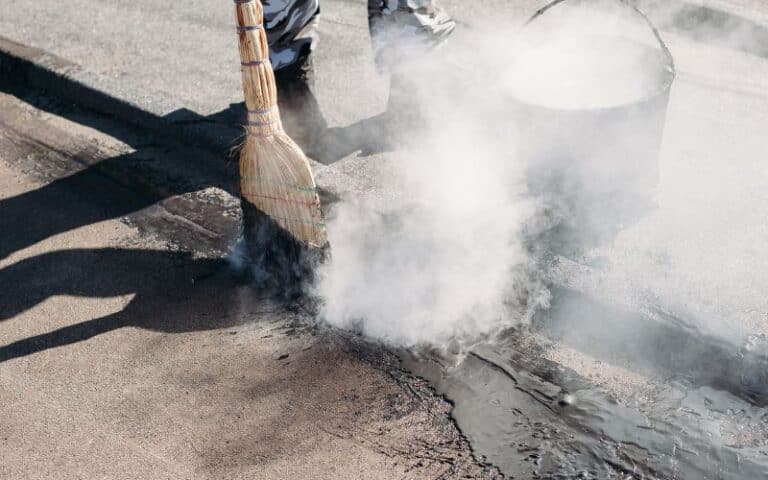To have a strong ceiling sheet standing when a strong wind comes, you need to get the right nail to hold it together with your plywood at a firm position.
Roofing nails come in sizes and types, so research is good, especially when you do the roofing yourself.
As you read through, you will know why nails show in your attic and what you should do if you need neat work.
Most occur because many ceilings have nails popping out of the other end; this doesn’t mean that your ceiling is bad, but the nails used on it are very long. Most people improvise using short nails, which can lead to losing your roof to the wind.
Ready for a Roofing Quiz?
Should Roofing Nails Be Exposed in Attic?

It’s not bad for a roofing nail to be in your attic, nor is it advisable. Most nails that show through are usually long, and the carpenter couldn’t fix them because they put your roofing shift firmly with your plywood.
One of those types of nails used for roofing is the ring-shank nails used to fasten roofing materials to the wood or OSB roof decking often pierce into the attic more than a quarter of an inch.
Because the pointed end of the nail will not have any pullout resistance, the extra distance that sticks into the ceiling is required to give an adequate release barrier along the body of the nail.
In homes with metal or tile roofs, it’s not uncommon to find screws protruding into the attic space.
Adding to a good roof are the shorter nails entering the ceiling all over the bottom surface of the rooftop.
You should also be prepared to find a few longer nails (at least an inch long) close to the edge of the ceiling woods.
In the building industry, these nails are called “shiners,” Their primary purpose is to secure the roof covering to the joists or rafters when the original nails failed to hit their mark.
How to Fix Exposed Nails on Roof?
When roofing a ceiling, one would experience issues such as nails on the roof. Follow me carefully as I show you a way you can fix this yourself:
- Don’t over lift existing shingles. When temperatures are warm enough, you can repair asphalt shingle roofs without splitting or breaking the shingles.
- Replacement is preferable to re-driving. If the roof shielding the backed-out nail can be elevated enough (without splitting it), you can re-drive it with a hammer. Remove a twisted, corroded, or loose nail.
- Use fresh #11 or #12 aluminum, copper, or galvanized steel barbed ring shank roofing nails. New nails should penetrate 1 inch into wood plank decks, plywood, or OSB. Push the new nail an inch just above the previous one. Don’t hammer a new nail into an existing hole.
- Use a flat bar if the nail can’t be out because of the slate covering. Tap the nail head with a flat bar to re-drive it into the deck. Flat bars are like nail sets, and the nailhead should be flush with the shingle surface; don’t overdrive the nail past the shingle’s surface.
- After installing new nails or re-driving old nails, seal the nail heads with asbestos-free roof cement. After replacing the nails, fill the previous nail holes with roof cement.
- Apply roof glue to the raised shingle’s tab, which will sit at the top of the one you were operating on. One on each side and three evenly distributed across the shingle’s bottom. Put all roof glue about an inch from the border of the shingle, so it doesn’t leak out when you push it down.
- Lower the raised shingle and press the tabs into the ceiling glue to bind them.
Once you do this, you can now have your exposed nail hidden. If this step seems a bit complicated, I suggest you get a professional to help you.
How to Use Nails Perfectly for Attic?
A homeowner must drive safely. It’s important to know how to put a roofing nail properly.
Carelessness can lead to a messy appearance, leaks, and shingle deterioration on your roof. Learn how to pass your driving exam (nail).
First, nail three-tab shingles within half an inch of the nail line and other shingles within a quarter inch.
Wearing gloves, hold the nail on the roof and lightly tap it with a hammer, guiding it into place. Drive the roofing nail straight and not too deeply, damaging the internal structure.
Avoid under-driving nails; the nail head is lifted above the roof and not entirely installed/secured.
Underdriven nails are easier to fix than overdriven ones. Finish the installation with a few gentle taps.
Metal roofing nails are of different types. First, nail the roof’s ridge. Second, nail the wood under the metal roof.
You’ll need to pound harder than with other roofs. If any nails bend during driving, you may have roof holes.
Fill the hole with a larger screw and rubber washer. Compress the rubber washer between the nail head and metal roofing but not above the nail head. Then caulk to prevent leaks.
Can Roofing Nails Be Too Long?
To ensure that a roof will continue to function properly for a significant amount of time, selecting roofing nails of the appropriate size is essential.
Roofing works require careful preparation to avoid the nails falling out or pulling out on their own after some time has passed.
To make nails penetrate, you should ensure the length should range from 1-1/4 to 2 inches.
To determine the length of roofing nail that should be used, begin by adding the thickness of the sheathing, shingles, and underlay to the thickness of the roofing material.
When working on roofs, the diameter of the nail shank should be at least 11-12 gauges to secure roofing materials such as shingles, metal sheets, or roof tiles in place; roofing nails are available in a wide variety of diameters and lengths.
Because these installations decide how waterproof the roof would be and ensure that it will provide long-term general protection, a house must have the roofing nails installed correctly.
Below is the roofing nail sizing chart to know the kind of nails that fit your roof:
| Nail Length in Inches | Nail Length in Penny Inches |
|---|---|
| 1 | 2d |
| 1 ¼ | 3d |
| 1 ½ | 4d |
| 1 ¾ | 5d |
| 2 | 6d |
Water Dripping Into Attic Through a Roofing Nail
If conditions are not right, any roof can leak. Older roofs are prone to leaks. You need a roof inspection and repairs if you require a bucket every time it rains.
Without inspection, it’s hard to tell. Leaks are hard to find; thus, inform a professional before making repairs.
#1. Damaged Roofs
Try and replace your roofing shingles if your roof is 20 or 30 years old. Sun, wind, and rain can damage, crack, and loosen shingles over time.
Many times, ground-level devastation is obvious. Look for discolored roof spots. After a storm, shingles may litter your yard. Some damage, such as cracks, may require an inspection.
A damaged shingle won’t immediately leak; damaged shingles might cause a chain reaction. Weather and erosion first widen the crack or tear.
As the hole grows, the shingle’s base will open. The exposed foundation might decay or leak.
Once the underlayment is compromised, the weather can reach the roof decking. Roof decking is normally plywood and shouldn’t get wet. The harm will leak if left long enough.
#2. Backed-out Roofing Nails
Most roofs fasten roofing using nails. When a roofing nail pops out, it wriggles out of its hole. Nails might loosen and fall out over time.
A nail can leave a little hole for rainfall if it pulls out completely. Even up close, backed-out nails are hard to notice. Professional roofers must inspect roofs for back-out nails.
Conclusion
When it comes to roofing, everything in it matters; nails look very small but also determine how long your roof will last.
The problem of nails showing in your attic should not be a problem as this article has all it takes to get your desired satisfaction.






